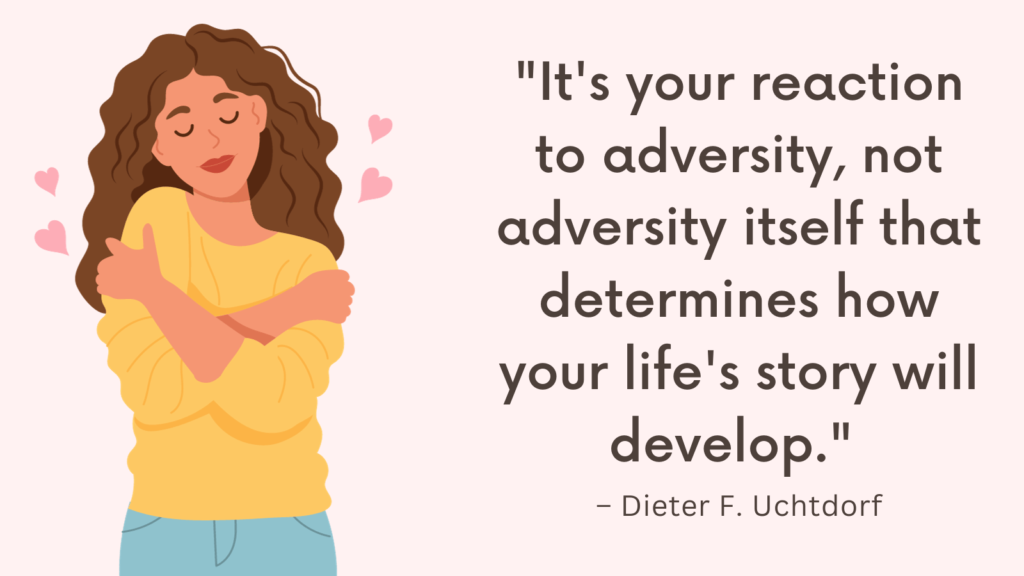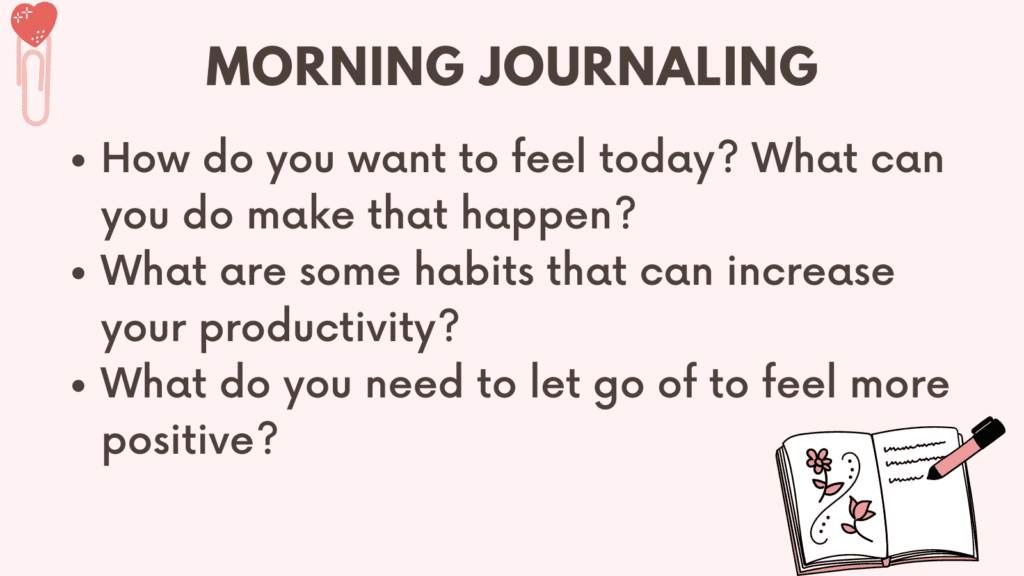This post contains some of the best CBT Journal Prompts.
What Are Cognitive Distortions?
Cognitive distortions, also known as thinking errors or cognitive biases, are patterns of irrational and inaccurate thinking that can negatively impact our perception of ourselves, others, and the world around us.
These distortions often arise from automatic thoughts, which are rapid and unconscious streams of thinking influenced by our beliefs, past experiences, and emotional state.
Here are some common cognitive distortions:
1. All-or-Nothing Thinking (or Dichotomous Thinking):
This distortion involves viewing situations in rigid, black-and-white terms, without considering any middle ground or nuances.
People with this distortion often see things as either perfect or a total failure, leaving no room for a realistic assessment.
2. Overgeneralization
In this distortion, individuals draw sweeping conclusions based on limited evidence or a single negative experience.
For example, if someone fails at one task, they may believe they will fail at everything else in life.
3. Mental Filtering
This distortion involves selectively focusing on negative aspects of a situation while ignoring or discounting positive aspects.
It can lead to a skewed perception of reality, as positive experiences are overlooked or diminished.
4. Disqualifying the Positive
This distortion occurs when someone downplays or discounts positive experiences, compliments, or achievements.
Individuals with this thinking pattern tend to believe that positive events are not genuine or significant, reinforcing a negative self-perception.
5. Jumping to Conclusions
This distortion includes two common subtypes: mind-reading and fortune-telling.
Mind-reading involves assuming you know what others are thinking, without any evidence to support it.
Fortune-telling refers to predicting negative outcomes without sufficient evidence or considering alternative possibilities.
6. Magnification and Minimization
This distortion involves exaggerating the importance of negative events (magnification) while minimizing or discounting positive events (minimization).
It distorts one’s perception, leading to excessive focus on flaws and failures while disregarding strengths and successes.
7. Emotional Reasoning
This distortion occurs when individuals believe their emotions reflect objective reality.
For example, someone might conclude that if they feel anxious or inadequate, it must mean they are incapable or unlikable.
8. Personalization
This distortion involves taking excessive responsibility for negative events, assuming that you are to blame for every setback or mishap without considering external factors or others’ contributions.
9. Should Statements
Should statements involve using words like “should,” “must,” or “ought to” and placing rigid and unrealistic expectations on oneself or others.
This distortion often leads to feelings of guilt, self-blame, and dissatisfaction.
10. Labeling and Mislabeling
This distortion involves assigning global and negative labels to oneself or others based on specific behaviors or perceived flaws.
It fails to recognize the complexity and multi-dimensionality of individuals, leading to self-criticism and stereotyping.
11. Catastrophizing
This distortion involves magnifying the potential negative consequences of events or situations, often assuming the worst-case scenario.
It can lead to excessive worry, anxiety, and distress.
12. Personalization
Personalization occurs when someone assumes that external events or other people’s behavior is solely directed at them.
They take things personally, even when there is little or no evidence to support this belief.
Related: What Causes Cognitive Distortions? (+Top 10 Common Cognitive Distortions & How To Challenge Them)
CBT Journal Prompts
1. Identify a negative thought you frequently have about yourself. Challenge it by asking: Is there evidence to support this thought? What alternative, more balanced perspective can I adopt?
2. Write about a recent situation that triggered strong emotions in you. What thoughts accompanied those emotions? How could you reframe those thoughts in a more helpful, realistic way?
3. Reflect on a time when you made a mistake or experienced failure. How did you interpret it? What would be a more constructive and compassionate way to view that experience?
4. List three things you appreciate about yourself and explain why they are meaningful to you.
5. Write about a fear or anxiety that has been holding you back. What evidence supports this fear, and what evidence contradicts it? What steps can you take to challenge this fear?
6. Write about a recent success or achievement. How did your thoughts influence your actions and outcomes? How can you replicate this positive thinking in the future?
7. List three cognitive distortions (e.g., mind-reading, overgeneralization) that you tend to engage in. How could you challenge each distortion with more realistic thoughts?
8. Describe a situation where you used black-and-white thinking (all-or-nothing). How could you introduce shades of gray or nuance into your thinking about this situation?
Related: +20 Overgeneralization Examples & How to Avoid It
9. Describe a situation where you jumped to conclusions or made assumptions. How might your behavior or feelings have changed if you had gathered more information before drawing a conclusion?
10. Write about a recurring negative belief you hold about yourself. Where did this belief come from, and how does it impact your life? How might you challenge or reframe this belief?
11. Reflect on a situation where you engaged in catastrophizing (exaggerating the negative consequences). How could you introduce more realistic and balanced thoughts about potential outcomes?
12. Describe a situation where you engaged in personalization (taking excessive responsibility for negative outcomes). How can you remind yourself that not everything is within your control?
13. Reflect on a time when you engaged in “projection” (attributing your own thoughts, feelings, or motives onto others). How could you take responsibility for your own experiences and consider alternative perspectives?
Related: Best 10 Intrusive Thoughts Books
14. Reflect on a negative self-label you often use. What evidence supports this label, and what evidence contradicts it? What kinder, more empowering labels could you adopt?
15. Describe a situation where you engaged in “should” or “must” thinking. How could you reframe your thoughts using more flexible language?
16. Write about a cognitive bias you frequently fall victim to (e.g., confirmation bias, hindsight bias). How could you become more aware of this bias and make more balanced judgments?
17. Reflect on a situation where you engaged in emotional reasoning (believing your emotions as facts). How could you challenge this by evaluating the evidence objectively?
18. Describe a situation where you engaged in self-blame. How could you shift your focus towards problem-solving and self-compassion instead?
19. Write about a situation where you engaged in “fortune-telling” (predicting negative outcomes without sufficient evidence). How could you challenge this prediction with more realistic thinking?
20. Reflect on a time when you engaged in self-sabotage due to negative thinking patterns. How could you recognize and interrupt these patterns in the future?
Related: Future Tripping: Top 9 Ways to Avoid Future-Tripping
21. Describe a situation where you engaged in “mind reading” (assuming you know what others are thinking without evidence). How could you gather more information or communicate more effectively to challenge these assumptions?
22. Write about a situation where you engaged in “discounting the positive” (minimizing or dismissing positive aspects). How could you savor and appreciate positive experiences more fully?
23. Write about a situation where you engaged in “mental filtering” (selectively paying attention to information that confirms your preexisting beliefs). How could you seek out alternative perspectives and consider all available evidence?
24. Describe a situation where you engaged in “overgeneralization” (drawing broad conclusions based on limited evidence). How could you introduce more specific and balanced thinking?
25. Write about a situation where you engaged in “comparison trap” (constantly comparing yourself to others and feeling inadequate). How could you focus on your own progress, strengths, and achievements instead of relying on external comparisons?
Related: Impulsive vs Intrusive Thoughts (& How to Manage Them)
CBT Journal Prompts To Challenge Cognitive Distortions
Once you identify your negative thoughts, use the following prompts to challenge them:
1. What specific emotions am I experiencing right now? Can I identify any triggers or situations that contributed to these emotions?
This prompt encourages you to become more aware of your emotions and the factors that influence them. Understanding the context of your emotions can help you recognize patterns and make changes accordingly.
2. Can I identify any cognitive distortions present in my current thinking? How might I reframe or challenge these distortions?
This prompt encourages you to recognize specific cognitive distortions in your thoughts. By identifying them, you can work towards reframing or challenging them with more realistic and rational alternatives.
3. What evidence do I have for this thought or belief? Are there any alternative explanations or interpretations?
This prompt encourages you to critically evaluate the evidence supporting your thoughts. It helps challenge black-and-white thinking and promotes a more balanced perspective.
Related: How To Stop Self-Critical Thoughts Using These Top 10 Techniques
4. What are the potential consequences of holding onto this negative thought or belief? How might my life be different if I let go of it?
This prompt helps you explore the impact of negative thinking on your well-being and overall quality of life. It motivates you to consider the benefits of letting go of distorted thoughts and embracing more helpful perspectives.
5. How have my thoughts and beliefs about myself, others, or the world evolved over time? Are there any recurring themes or patterns in my thinking?
This prompt encourages reflection on the development of your thoughts and beliefs. Exploring patterns or recurrent themes can shed light on underlying core beliefs that may be contributing to distress or dissatisfaction in your life.
6. What would I say to a friend who had this thought or belief? How might I offer them a more realistic and compassionate viewpoint?
This prompt helps you develop a kinder and more empathetic perspective towards yourself. It encourages you to offer the same support and understanding you would give to a friend facing a similar situation.
7. What are some concrete actions or coping strategies I can implement when faced with a challenging thought or situation?
This prompt encourages you to brainstorm and identify specific coping strategies or techniques to manage distressing thoughts or situations. It helps shift the focus from rumination to problem-solving and empowers you to take proactive steps towards positive change.
Related: Negative Core Beliefs List (& 8 Tips On How To Challenge Them)

Conclusion
Consistent practice of CBT journaling can enhance self-awareness, challenge unhelpful thoughts, and promote healthier cognitive and emotional patterns.
Journaling should be a safe and nonjudgmental space for self-reflection. Write freely and honestly, allowing yourself to explore your thoughts and emotions.



